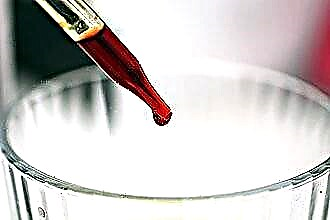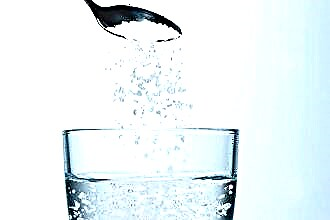Gargling with iodine is considered one of the most effective methods of dealing with sore throat, discomfort when swallowing. There are many reasons for the appearance of pain syndrome.
 The most common provoking factors include:
The most common provoking factors include:
- SARS and other viral infections (mononucleosis, measles);
- bacterial infections (tonsillitis, scarlet fever);
- tobacco smoke;
- cold air;
- strong odors.
Today there are many solutions for gargling the throat that have anti-inflammatory, antiseptic, analgesic, anti-edematous effects. The composition of medicines can include both pharmacological and herbal components.
The most effective treatment for sore throat is an iodine solution. The medicine has been used for many years to prevent and treat diseases that manifest as a sore throat.
Timely use of iodine solution avoids the progression of the disease, the appearance of other symptoms
Instructions for using iodine solution
Iodine is a part of some hormones, indirectly takes part in the formation of phagocytes (immune cells involved in the fight against infectious pathogens).
Iodine has a pronounced antimicrobial, moderate local irritating effect, which allows you to fight pathogenic microorganisms, activate local blood flow, and deliver biologically active substances. As a result, the swelling and the intensity of inflammation are reduced.
Upon contact with the skin, mucous membranes, a third of all iodine is transformed into iodides, the rest into active iodine. Absorption is partial, providing a minimal amount of systemic action. Upon penetration into tissues, it is absorbed by the thyroid gland (thyroid gland). Excretion from the body is mainly carried out by the kidneys, as well as through the sweat glands, intestinal parts.
 Iodine for external use is indicated for infectious and inflammatory wounds of the skin, including those of traumatic origin. Gargling with iodine is recommended for chronic, acute forms of tonsillitis, pharyngitis, when sore throat worries.
Iodine for external use is indicated for infectious and inflammatory wounds of the skin, including those of traumatic origin. Gargling with iodine is recommended for chronic, acute forms of tonsillitis, pharyngitis, when sore throat worries.
Contraindications for oral use include tuberculosis, nephritis, benign adenomas, purulent skin diseases (furunculosis, pyoderma), diathesis, acne, urticaria. With regard to local use, allergic reactions are distinguished among the contraindications.
When used externally, side effects are possible in the form of:
- skin irritation;
- iodism (with prolonged use), which is manifested by rhinitis, skin rash like urticaria, salivation, lacrimation.
Among the adverse reactions with oral administration, it is worth highlighting a rapid heartbeat, increased sweating, intestinal dysfunction (diarrhea), skin allergic manifestations, sleep disturbance, irritability.
During rinsing, it is necessary to avoid swallowing the solution to prevent irritation of the gastrointestinal mucosa.
How to properly prepare an iodine solution
The most popular folk recipe is a combination of iodine, salt, soda. The prepared solution has a therapeutic effect due to three components:
- salt takes part in cleansing the mucous membrane of the oropharynx, tonsils from pathogenic microorganisms, purulent discharge, films, has an antiseptic effect;
- soda has a sedative effect on the mucous membrane of the oral cavity, oropharynx, accelerates regenerative processes, which causes rapid healing of microcracks, and also acts as an analgesic;
 iodine is considered a unique component of the medicinal solution, as it stimulates local immunity to increase the level of protection. In addition, iodine reduces tissue edema, activates tissue regeneration processes.
iodine is considered a unique component of the medicinal solution, as it stimulates local immunity to increase the level of protection. In addition, iodine reduces tissue edema, activates tissue regeneration processes.
To prepare a solution with iodine, it is necessary to heat the water to 40 degrees (using hot water increases the risk of burning the mucous membrane, accelerating the absorption process into the bloodstream, which can worsen the general well-being).
Salt, soda (1 teaspoon each), as well as 2 drops of iodine are added to water with a volume of one glass. The most important thing is not to exceed the permissible iodine dosage. If soda and salt are considered relatively harmless ingredients, then an excessive amount of iodine leads to undesirable consequences.
All components of the medicinal solution must be thoroughly mixed until completely dissolved. Rinsing is carried out for up to 5 minutes, periodically spitting out and filling the mouth with a new portion of the solution. Frequent rinsing is also not recommended, as dryness of the mucous membrane is possible. As a result, the pain sensations become more intense.
Rinsing rules
To achieve the maximum therapeutic effect, you must follow the rules of rinsing. Despite the simplicity of the procedure, it can have both positive and negative effects.
- The procedure should be repeated regularly. It is recommended to use the iodine solution no more than three times a day for 2-3 days. In the intervals between rinses, you can irrigate the tonsils, oropharynx with an antiseptic spray. In the acute phase of tonsillitis, pharyngitis, rinsing is carried out every 2 hours, alternating iodine with other types of medicinal solutions based on herbs (Rotokan) or pharmaceutical ingredients (Chlorophyllipt, Miramistin).
- Throughout the procedure, the sound "Y" should be pronounced. This is necessary to maximize the achievement of the pathological focus with the treatment solution. When pronouncing, the root of the tongue descends, which allows the solution to penetrate more deeply into the oropharynx.
- When rinsing, it is recommended to tilt your head back, which makes it possible to increase the area of action for the antiseptic. At the same time, better cleansing of the mucous membrane is provided, due to which the pain sensations are significantly reduced.
- After the procedure, you should not drink, eat for 20 minutes. The impact of the food lump in the first minutes after rinsing increases the trauma of the mucous membrane, irritates it, and also significantly reduces the therapeutic effect.
Some people wonder if it is possible to gargle with more iodine. The high iodine content in the solution increases the risk of poisoning, which manifests itself as an allergic reaction (rash on the skin, lacrimation, rhinitis, swelling of the face). If these symptoms appear, you need to stop rinsing.
As for people with hypersensitivity to iodine-containing drugs, the procedure using an iodine solution is prohibited for them.
Especially the use of iodine for pregnant women
Colds during pregnancy are quite often recorded among obstetric pathology. This is facilitated by a decrease in the body's immune defense against the background of hormonal changes. In this regard, the woman's body becomes more sensitive to infectious pathogens.
In addition, the course of the disease is more severe, therefore it is recommended to consult a doctor in a timely manner in order to avoid the development of complications.
The appearance of pain in the throat indicates the presence of an inflammatory process, with which you need to immediately begin to fight. Given the fact that antibiotic therapy is limited during pregnancy, gargling is considered the most effective method.
How to gargle pregnant women using iodine solution? Pregnant women are allowed to undergo the procedure, provided that there are no allergic reactions to iodine-containing products or drugs.If a woman has never used such a solution before pregnancy, it is not recommended to start using it during this period.
In addition, some experts limit the use of iodine solution in early pregnancy.
Excessive intake of iodine in the first trimester into the body of the expectant mother can negatively affect the formation of the thyroid gland in the fetus.
For pregnant women, there are proven drugs that are approved for 9 months. These include Furacilin, Miramistin, Chlorhexidine, Chlorophyllipt, Ingalipt. The listed drugs are available in the form of solutions, spray for irrigation of the oropharynx, tonsils.
They have an antiseptic, anti-inflammatory, anti-edematous, analgesic effect, accelerate regenerative processes and, accordingly, healing. Of the tabletted forms for resorption, Lizobact, Faringosept should be distinguished.
Gargle for children
Rinsing as a medical procedure for children is allowed from the age of two, but even at 2 years of age there is a risk of swallowing the solution or getting it into the respiratory tract. As a result, the child develops a severe cough and becomes frightened.
In addition, not all children react well to the taste of salt and baking soda, so it is difficult for them to wash their throats. According to the instructions, iodine solution is allowed for children from 5 years old, provided that the child knows how to gargle without swallowing the medicine. Contraindications for the use of iodine include an allergic reaction.
For cooking, you need to heat the water to 40 degrees, add soda, salt (0.5 teaspoon) to a glass of water, and then add 1 drop of iodine. After mixing the solution well until the ingredients are completely dissolved, it is used once a day.
Treatment of angina, pharyngitis involves frequent rinsing of the throat (5-6 times a day), but not all parents manage to convince the child of the need for the procedure. For this reason, sprays with a more pleasant taste and lozenges are often recommended.
From solutions in the form of a spray, Ingalipt is used, Hexoral for children over 3 years old, Tantum Verde - from 4 years old, Cameton - from 5 years old, Stopangin - for children over 8 years old. Among the tablet forms, Lizobakt, Strepsils are prescribed for children.
If a sore throat is observed in a child under 1 year old, it is recommended to use the Aqualor Baby spray. The drug allows you to gently rinse the nasopharynx, it is allowed for use every day for prophylactic purposes, as well as for ARVI, after medical procedures. Bezkoshtovnі gifts to new grave casinos online elslots Washing with this solution is used as part of the complex treatment of sinusitis, pharyngitis, stomatitis.
When a sore throat appears, it is necessary to start gargling without waiting for the appearance of pain. If, nevertheless, pain does appear, it is recommended to consult a doctor to determine the treatment tactics.
If necessary, a specialist can prescribe antibiotic therapy in addition to rinsing. It is carried out in the case of a purulent process, the spread of an infectious pathogen throughout the body.
Symptomatically, the generalization of the infection can be suspected on the basis of such clinical symptoms as febrile hyperthermia, difficulty swallowing, body aches, headache, dizziness. On examination by an otolaryngologist, the severity and prevalence of the infectious and inflammatory process is established.
Based on the results of pharyngoscopy, laboratory diagnostics, therapeutic tactics are determined, taking into account the patient's age, the presence of concomitant pathology.

 iodine is considered a unique component of the medicinal solution, as it stimulates local immunity to increase the level of protection. In addition, iodine reduces tissue edema, activates tissue regeneration processes.
iodine is considered a unique component of the medicinal solution, as it stimulates local immunity to increase the level of protection. In addition, iodine reduces tissue edema, activates tissue regeneration processes.

